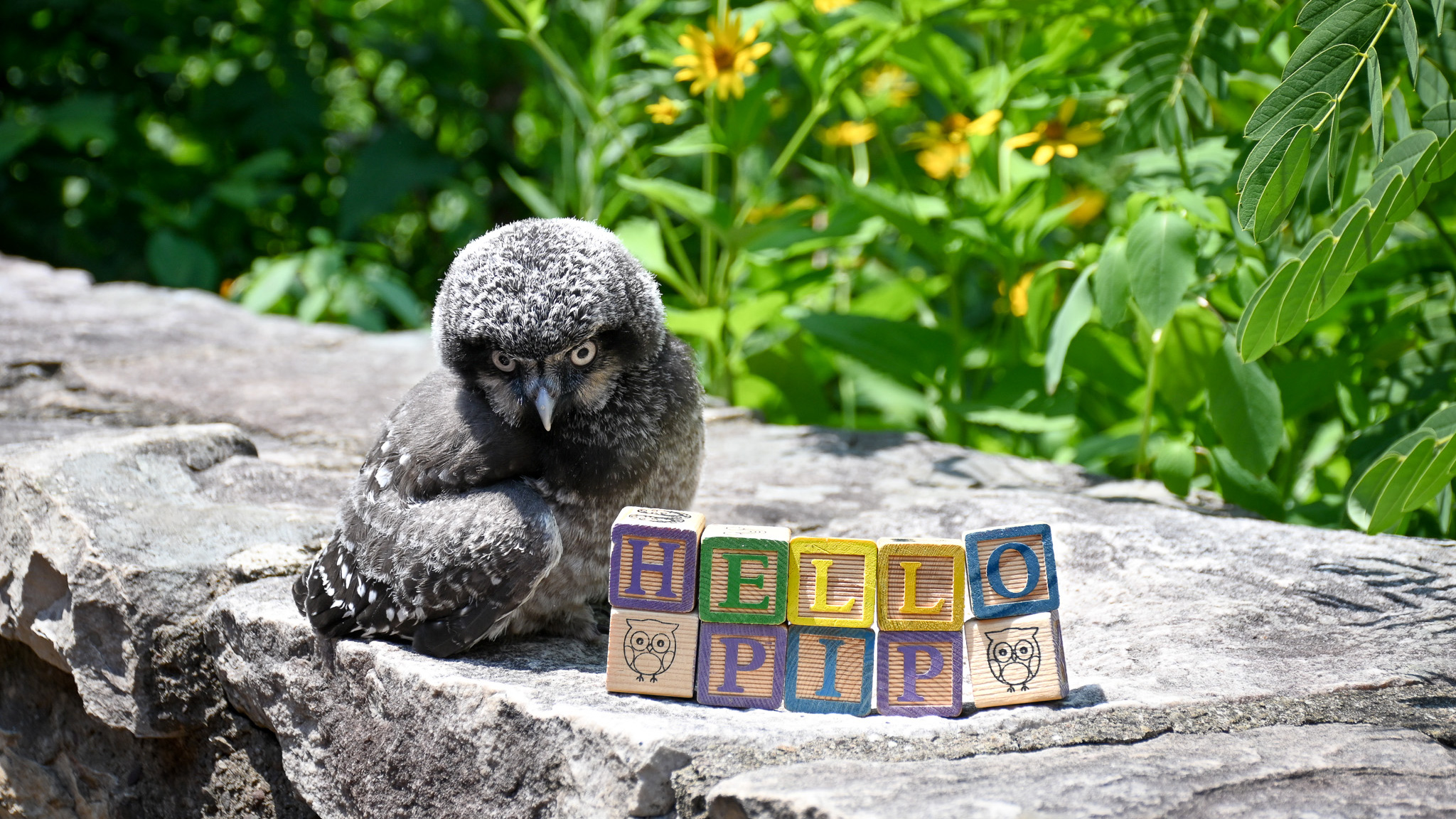
This summer, Shaver’s Creek has been honored with the unprecedented opportunity to add a Northern Hawk Owl to our Klingsberg Aviary! This is an incredible species of owl, and one that we are so excited to share with our community. Our newest ambassador, named Pip to commemorate the first stage when hatching from an egg, is currently four weeks old.
At Shaver’s Creek, we work hard to foster meaningful conversations with our visitors and program participants. Our Wildlife Program team puts a lot of thought and intention into each new animal ambassador that we welcome to be sure that they will complement our education and conservation goals. Welcoming Pip has us all excited about the conversations we’ll be able to cultivate and how they will connect to the overall story of the Klingsberg Aviary!
About Hawk Owls
Many people are unfamiliar with the long and complicated history that Hawk Owls have in Pennsylvania due to their periodical visitation and elusive nature. Hawk Owls breed primarily in Canada and Alaska (though the number of known nests in the lower 48 has risen in recent years), but they often choose to winter further south, like other more northernly distributed species such as Rough-Legged Hawks and Snowy Owls.
Until 1991, Hawk Owls were documented in Pennsylvania on roughly a 10-year cycle, occurring in at least eight counties. For reference, the more well-known Snowy Owl arrives in our state on a five-year cycle. While the cycle fluctuated a bit, they were appearing frequently enough that many field guides up until the 1990s included the Northern Hawk Owl in lists of native Pennsylvania birds.
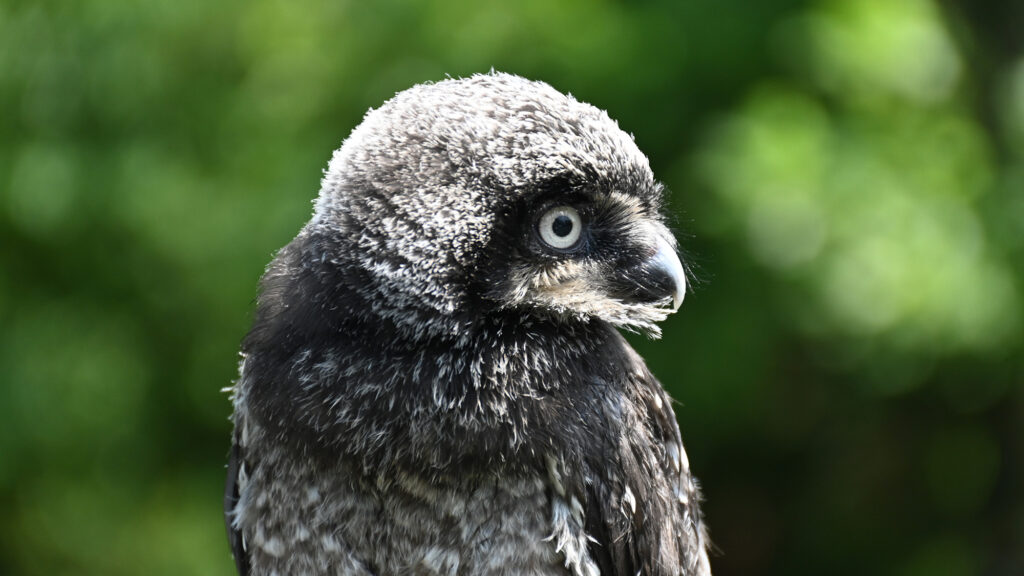
In the 1880s, there was a record high influx of Hawk Owls and, lacking the legal protection of today, they were readily shot by locals with their own interests. A taxidermist in Maine reportedly had 30 Hawk Owls in his shop alone one winter, with other shops citing similar numbers. This pressure was unfortunately felt by many wintering raptors across the state and country, and we still don’t fully understand the impact of these activities today.
Yet, Hawk Owls persisted in the northeast throughout the 20th century. In the 1980s and ‘90s something interesting happened to a few species of birds in the Commonwealth—they abruptly disappeared from documentation. Birds like the Loggerhead Shrike and the Western Cattle Egret, previously reliable summertime species, stopped breeding in Pennsylvania in 1985 and 1989, respectively. And in the winter of 1991, the last Northern Hawk Owl was observed.
At the time of this blog, the Pennsylvania Society of Ornithology lists Hawk Owls as “rare” (having fewer than five observed in a year) and “accidental” (having not been seen in the last ten years). It has now been 34 years since one of these beautiful birds was seen in our state. They’ve come close, being observed along the southern New York border, but have not been sighted across the state line. As more time passes, birds like Cattle Egrets and Hawk Owls, and their contributions to the ecological history of Pennsylvania, are being slowly forgotten.
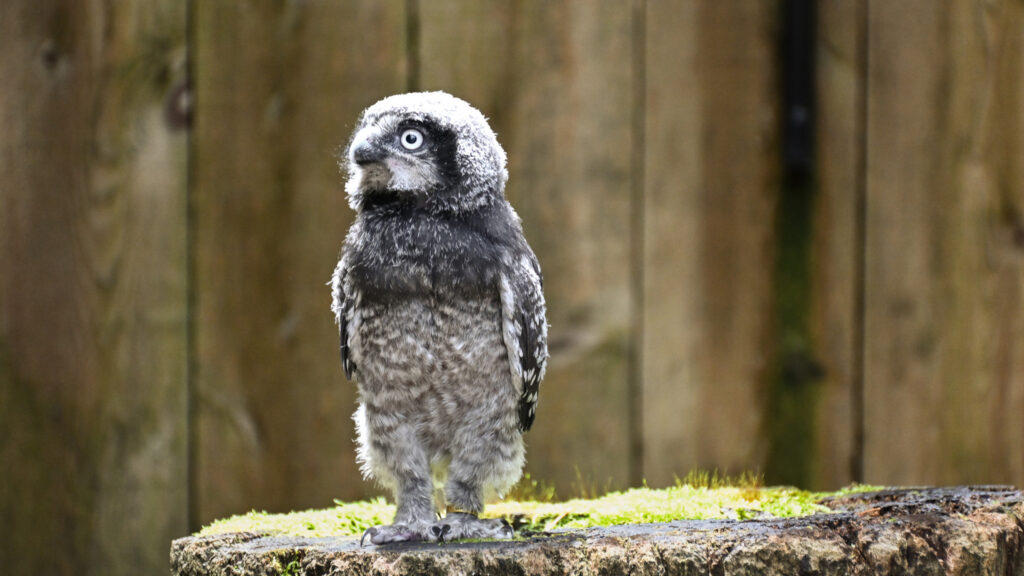
At Shaver’s Creek, we believe that by sharing the history of Hawk Owls in our state, we can keep their memory alive and foster meaningful conversations around their story. Given enough time, enough awareness, enough consideration, and especially enough conservation, we will be ready when these incredible birds once again find a winter home here in the Commonwealth.
Hawk Owl Habitats
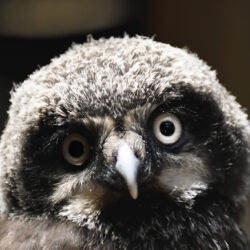 A big piece of the puzzle is having an appropriate habitat for these birds to return to. This is easier said than done, as there has only been one peer reviewed study on wintering habitat of Hawk Owls in the United States. From our understanding, they rely on bogs and tamarack forests; both are naturally occurring habitats in Pennsylvania and were probably a big factor in the presence of Hawk Owls here historically.
A big piece of the puzzle is having an appropriate habitat for these birds to return to. This is easier said than done, as there has only been one peer reviewed study on wintering habitat of Hawk Owls in the United States. From our understanding, they rely on bogs and tamarack forests; both are naturally occurring habitats in Pennsylvania and were probably a big factor in the presence of Hawk Owls here historically.
Bogs, especially, need more awareness and appreciation from all of us. Like swamps and marshes, bogs have been viewed as wasted land by some; despite this narrative, bogs are among the most diverse habitats in all of Pennsylvania! Bogs host unique plant life such as the carnivorous pitcher and sundew plants, and they provide sanctuary to a broad host of amphibians. They have been areas of great importance to humans throughout time as well, providing foods such as cranberries. Representation of this habitat can be found in several local places such as the aptly named “bog trail” in Black Moshannon State Park.
However, like many wetland areas, bogs are sensitive to pollutants, runoff, and the mining of “peat.” Our Northern Hawk Owl will join our resident Barred Owls, Gray Tree Frog, and Eastern Hellbender in educating about the importance of wetlands, strengthening each other’s messaging, and encouraging visitors to take actions to protect their watery homes.
Advancing Research
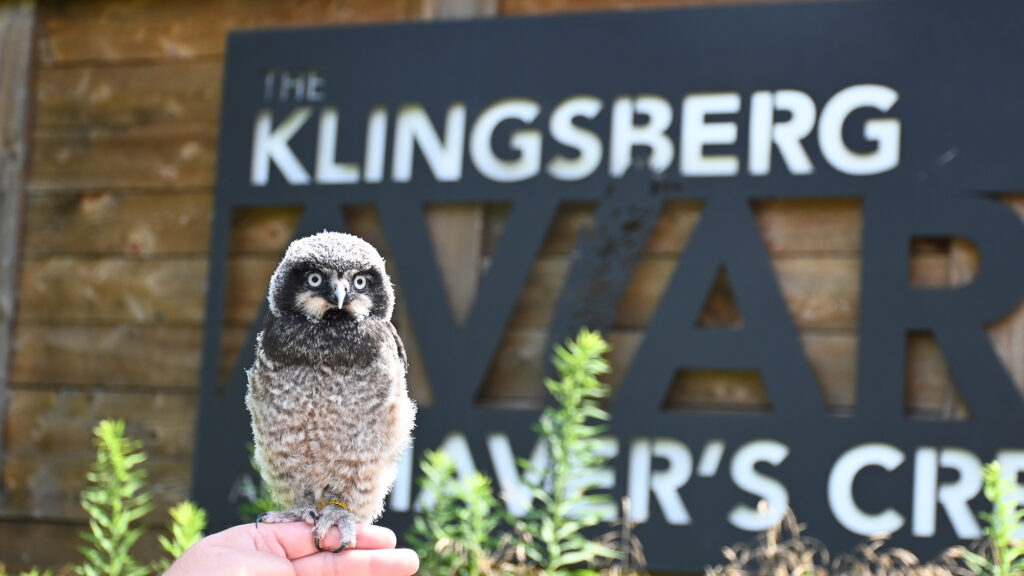
Owls are some of our favorite animals to work with at Shaver’s Creek, and we are very fortunate to have a variety of owl species represented in the Klingberg Aviary. As a group, owls have seen general population decline over the years, with species like our state endangered Short-Eared Owl experiencing declines of more than 80 percent.
Hawk Owls are hard to survey. They are one of the least studied birds in North America with fewer than 10 studies conducted globally. Pip will give us the opportunity to promote research projects such as those being done by the University of Minnesota Duluth and the Owl Research Institute to better understand this species in the United States. After all, we can’t protect what we don’t understand.
We also want to help contribute to the knowledge of this species under human care. Our Wildlife Program has published and presented a few times on the care of our owls and, with only three other education centers working with Hawk Owls across the nation, we see this as a great opportunity to contribute in a meaningful way to the future of this species as educational ambassadors.
We want to encourage our visitors to contribute to this understanding as well. One way that everyone can help advance these important research projects is by using tools like eBird, a popular birding app that collects data for use by researchers worldwide! Birding is a four-season sport, and Pennsylvania typically has more raptor species present in the winter than we do in the summer. While eBird no longer shares the exact location of Hawk Owls in the United States to protect their safety, the information is still available to researchers. Your observations, whether you spot a Hawk Owl or not, will contribute to real conservation initiatives! Just remember to practice ethical birding during your excursions.
Meet Pip
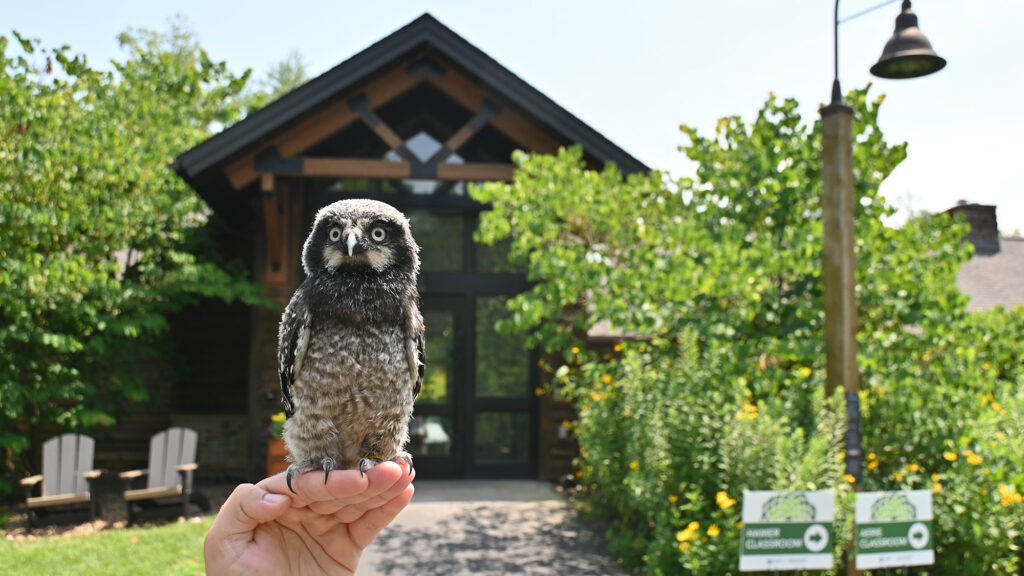
To celebrate such a special acquisition, we wanted our community to be involved from the start. For a limited time, you can register for a special Animal Encounter where you’ll meet baby Pip up close and personal while learning all about him and his species from the Shaver’s Creek Wildlife Program team. To see a baby Hawk Owl is truly a once-in-a-lifetime experience, and we’re delighted to be able to share it with you!
Space is limited, and we expect this program to sell out quickly—don’t wait if you hope to register! Learn more on our website and keep an eye on our socials for all the Pip updates you can imagine!
